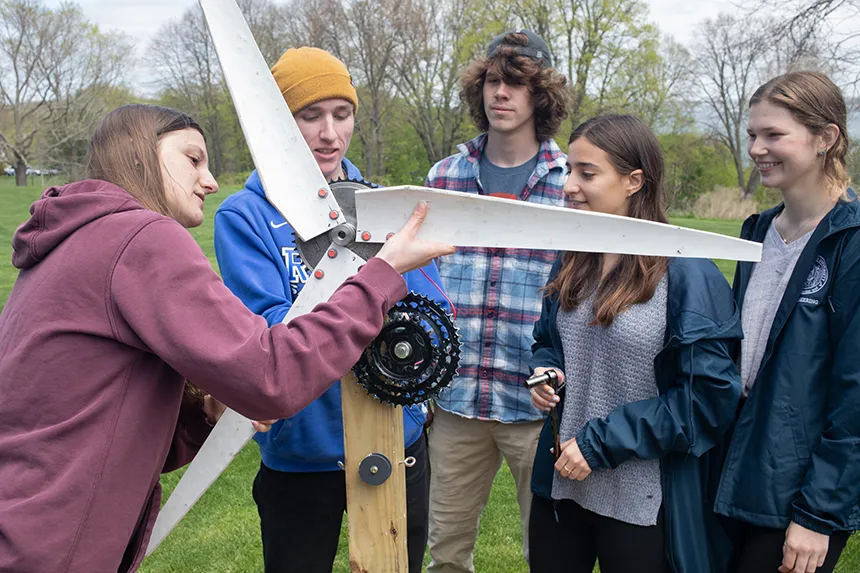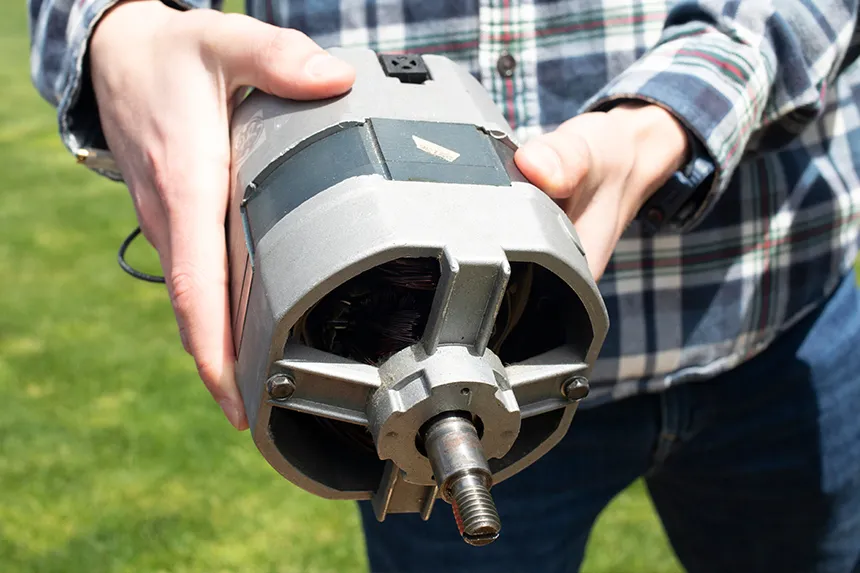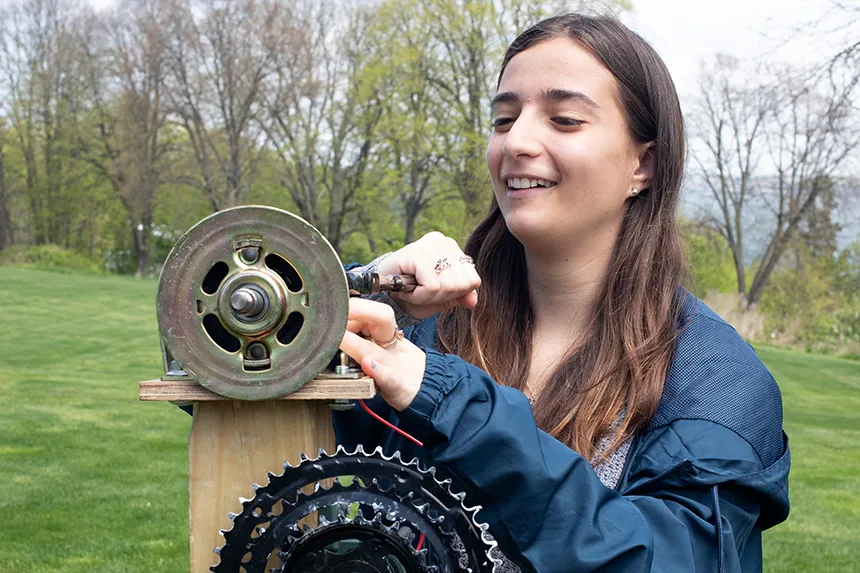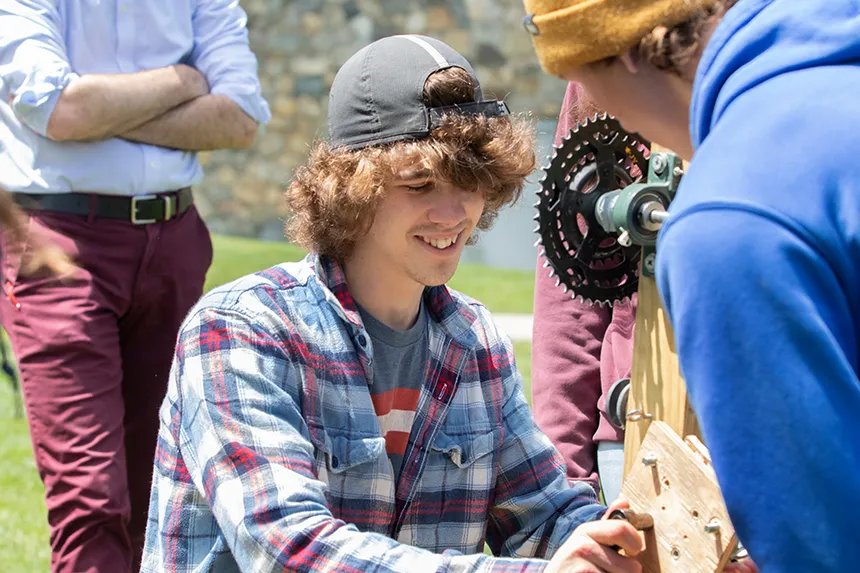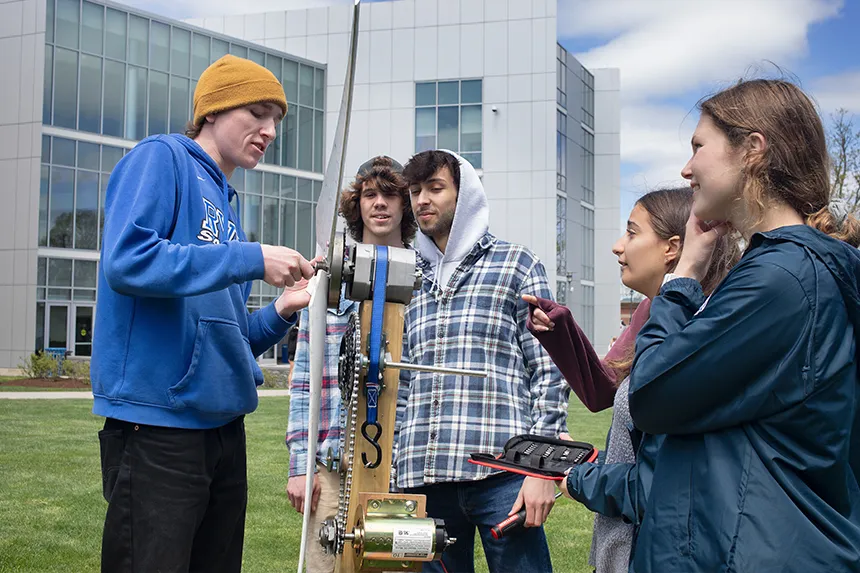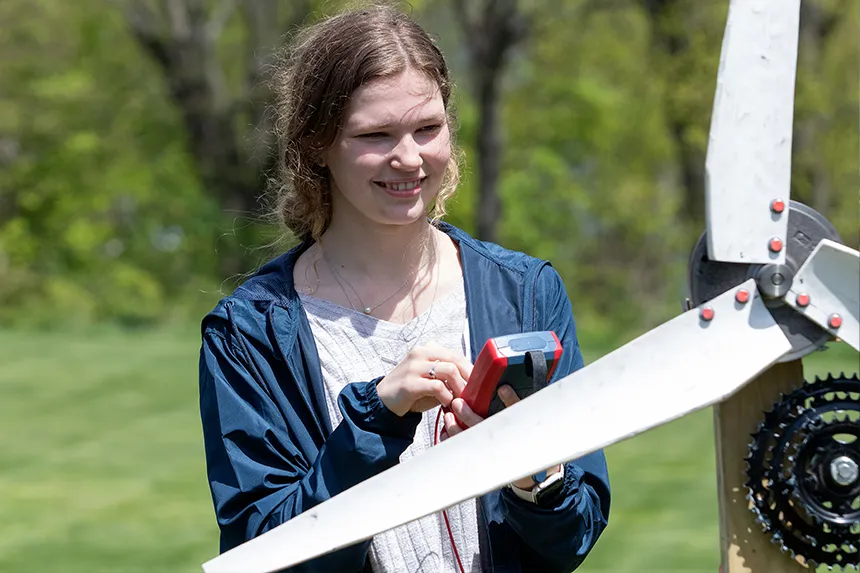How to Build Your Own Wind Turbine
A team of Engineering students from the Class of 2022 share their steps for building your own “personal-use” backyard wind power
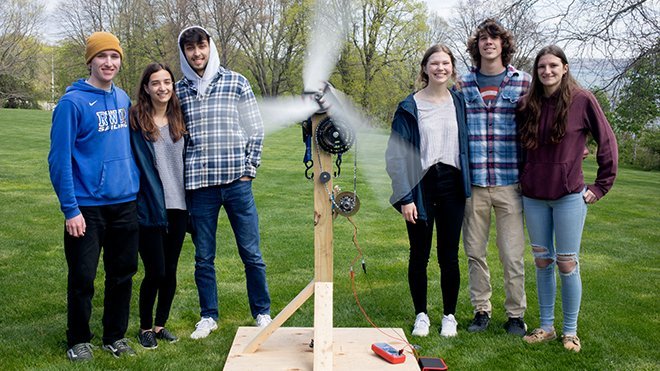
If you have a treadmill, a bicycle and some PVC pipe, you have a mini wind turbine in the making. A senior engineering team’s capstone project improved upon an open-source wind turbine design that could put wind-energy generation in the hands of the average homeowner.
“Based on our engineering knowledge, we knew there were better ways to make improvements, so we took what we were learning in class to build a better design,” said Hannah Darling ’22, a Lakeville, Mass., resident who specialized in environmental engineering.
It took the team a full year of trial, error and innovation to make their enhanced prototype, but tackling challenges comes with the territory of being an engineer, according to John Walton ’22. “Engineering is basically dealing with problems as they arise and knowing how to find solutions,” said the Grosse Pointe, Mich., resident who specialized in mechanical engineering.
Follow the team’s steps to build your own “personal-use” backyard wind power.
1. The Right Blades
Much research went into designing the blades, cut from PVC pipe. Thanks to a Sustainable Energy Engineering Course, Darling and Walton knew how to use MATLAB programming to model performance of blades shapes. “Then we sanded and shaped the blades to a traditional design for an air foil wind turbine, improving efficiency and aerodynamics,” said Darling.
Wind Turbine Tutorial
2. Motorin’
The blades powered the motor, used in reverse as a generator to produce voltage. Actually, they used two treadmill motors, but the top one just provides a stable, frictionless base for the blades to turn, according to Walton, now in a master’s program in naval architecture and marine engineering at the University of Michigan.
3. Without Gears, It’s Nothing
The real genius in their design improvements came with the addition of two sets of gearing. “The gearing increases rpms of the motor,” Walton said. “For every time the blades spin, we wanted the motor to spin faster and result in a higher voltage.” The result: five times more power than the original design and enough to reach their goal to charge a 12-volt battery.
4. Scale Your Power Needs
The team designed a “personal-use turbine,” said Darling, capable of powering household lighting and appliances or “for off-the-grid situations.” While they used a treadmill motor, their design can scale bigger and taller with larger engines to reach higher wind speeds and create more power. But – given enough time, Walton said, “a fully charged 12-volt battery can power a lot of things.”
5. Team Advantage
Of course, if you want to make design modifications, it helps to have an engineering team. Each team member brought different skillsets and tackled varying parts of the work, said Darling, who translated her interest in turbine-blade technology to a Ph.D. program in mechanical engineering focused on wind energy at the University of Massachusetts, Amherst.
6. Testing, Testing
A lot of prototype experimentation was required in recreating the basic design and then building their advanced model. Luckily for them, they had a campus with a bay breeze as their testing grounds. Affixing wheels to the model base, they rolled it to different spots on campus, among them atop the parking garage, and employed a multimeter to detect the wind power harnessed by their machine.
